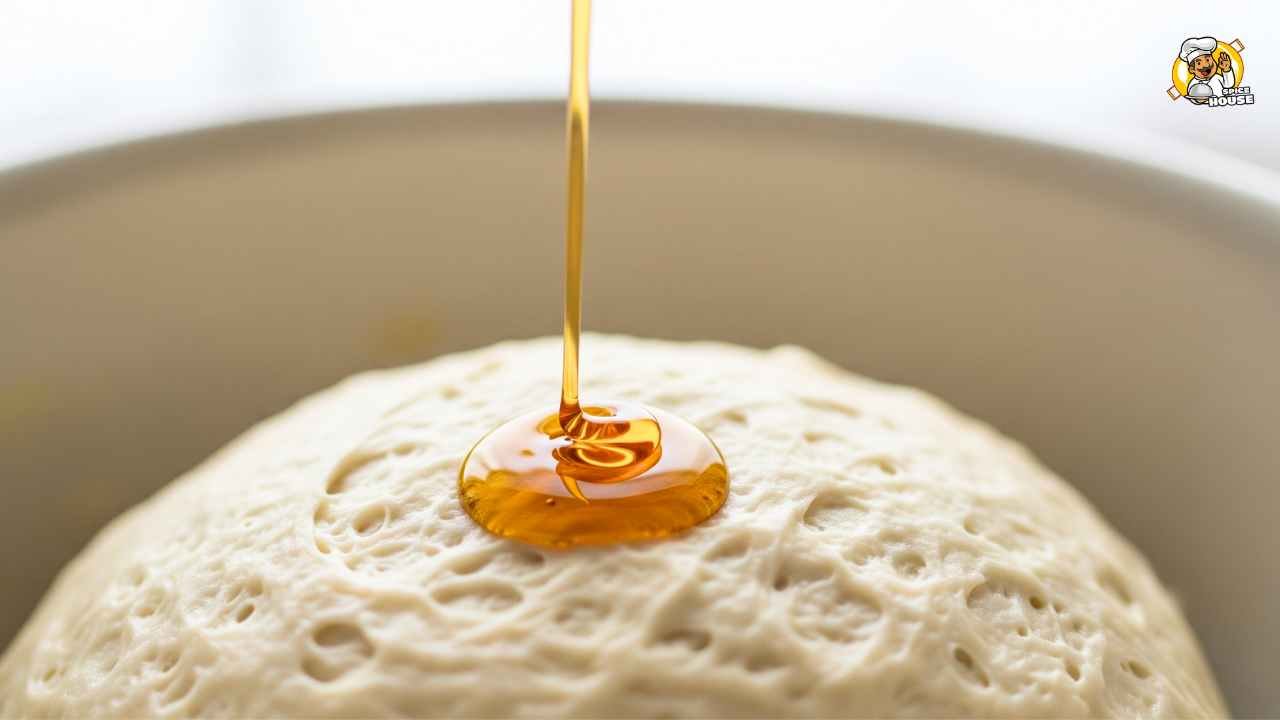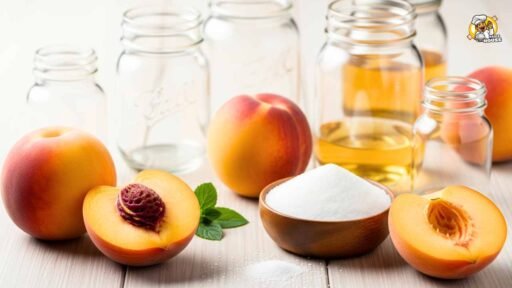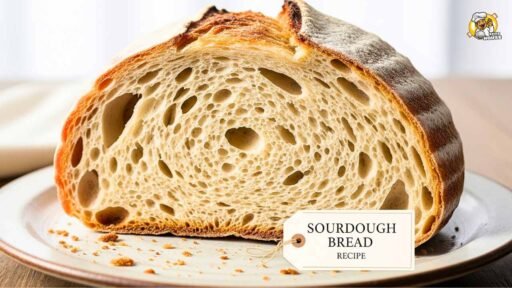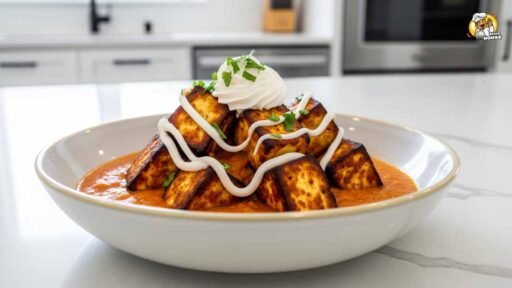Vanilla was once cheap and quiet in the pantry. Then it turned into a headline ingredient. After a cyclone hit Madagascar, the world’s top vanilla producer, prices spiked to nearly $600 per kilogram in 2018, according to Bloomberg. The ripple effects still shape what we bake, what we buy, and how brands market flavor. Now, a simple question is trending in home kitchens: What actually happens if you add vanilla to bread?
Here’s the thing: that tiny teaspoon isn’t just about aroma. It taps into a broader shift toward dessert-leaning loaves, premium spices, and a willingness to pay extra for “elevated” basics. It affects home bakers who want more character in a weeknight loaf, bakery operators who angle for a $1 upcharge, and yes, investors watching how companies like McCormick & Company convert flavor trends into sales. Is vanilla the secret to better bread—or is it a sweet-smelling upsell? Let’s test the claim and spell out the impact.
The Data:
-
Vanilla prices hit near $600/kg at their 2018 peak after weather shocks in Madagascar, per Bloomberg reporting. Volatility has eased, but vanilla still trades at a premium compared to a decade ago.
-
The FDA’s standard of identity requires pure vanilla extract to contain at least 35% alcohol. That matters because alcohol affects dough systems (mostly in theory, a little in practice).
-
McCormick & Co. reported about $6.6 billion in net sales in fiscal 2023, according to company filings. The company’s annual Flavor Forecast leans hard into cross-over flavors that blur sweet and savory—which is exactly where vanilla-in-bread lives.
Quick: What Happens If I Add Vanilla To a Bread Recipe?
-
Aroma: You’ll get a warm, round vanilla note that can make even a lean loaf smell richer.
-
Perceived sweetness: Vanillin enhances sweetness perception. Bread tastes slightly sweeter at the same sugar level.
-
Browning: If you also boost sugar (many bakers do), crust color deepens thanks to Maillard and caramelization.
-
Fermentation: The alcohol in the extract is minimal at normal doses; rise and timing barely change.
-
Style shift: The flavor profile nudges toward brioche or milk bread territory—without going full pastry.
What Happens If I Add Vanilla To a Bread Recipe (Step-By-Step Guide)

Step 1: Choose The Right Vanilla and Dosage For Your Bread Style
Before you twist a cap, decide what “vanilla bread” means in your kitchen. Are you after a whisper of warmth in a country loaf, or a bakery-style milk bread you can eat plain?
-
Pure extract: This is the workhorse. It’s consistent, disperses easily, and the bottle lists “alcohol” because the FDA standard mandates about 35% booze. It’s what most home bakers should reach for first.
-
Vanilla paste: Thick, with seeds (specks). Great for enriched breads where you want visible cues and a slightly stronger vanilla presence without changing the hydration much.
-
Whole beans: Best for special loaves. Split and scrape the seeds; steep the pod in your milk or water, then remove. It gives a layered flavor, but it’s expensive and a bit fussy for everyday bread.
-
Imitation vanilla: Budget-friendly. It leans one-note (ethyl vanillin), but in bread—where the flavor matrix includes yeast notes, wheat, and lactic acidity—it can still be surprisingly effective.
Dosage guidelines for 500 g flour:
-
Subtle (lean country, baguette-style): 1/4 to 1/2 teaspoon extract. It reads as “mellow, round.” Most people won’t clock “vanilla,” but they’ll describe the loaf as more aromatic.
-
Noticeable (sandwich, sourdough pan loaf): 3/4 to 1 teaspoon. The kitchen will smell like a bakery. The slice tastes a touch sweeter, even if you didn’t add sugar.
-
Bold (milk bread, enriched sandwich, brioche-adjacent): 1.5 to 2 teaspoons or 1 tablespoon paste. Now it’s a feature, not a background player.
One vanilla bean roughly equals 2 to 3 teaspoons of extract. Use the lower end for lean doughs and the higher end for enriched doughs. And yes, price matters—save whole beans for celebration bakes.
Step 2: Adjust the formula so vanilla lands where you want it
Vanilla doesn’t act alone. It plays in the same sandbox as sugar, fat, salt, and acids. A few measured tweaks can make it sing.
-
Sugar: Vanilla makes things taste sweeter. If you want a “clean bread” profile with a hint of warmth, keep sugar at 0% to 2% baker’s percentage. If you want a soft, fragrant crumb, go 3% to 6% sugar. For 500 g flour, that’s 15 to 30 g sugar. Too much sugar slows yeast; at these levels, you’re fine.
-
Fat: Butter or neutral oil at 2% to 5% softens the crumb and carries aroma. Butter’s milk solids add their own sweetness. If you’re guarding crust crackle, keep fat at the low end.
-
Salt: Vanilla can soften salt’s edge. Hold salt steady at 1.8% to 2.2%. You want flavor pop, not a flat loaf.
-
Liquid: If you steep a bean in milk, remember that milk tenderizes and slightly tightens the crust. Water keeps the crust crisper. Hydration doesn’t need to change for extract or paste.
-
Preferments and sourdough: Vanilla waltzes with sourdough’s lactic notes. In a tangy loaf, it rounds the edges. Watch dough temperature, not vanilla, to manage acidity.
A simple pivot example (500 g bread flour):
-
Lean baseline: 350 g water (70%), 10 g salt (2%), 2 g instant yeast (0.4%)
-
Vanilla-soft sandwich: 350 g water, 20 g sugar (4%), 15 g butter (3%), 10 g salt, 2 g yeast, 1 tsp vanilla extract
See how little changed? You’re not baking cake. You’re nudging the bread toward comfort—without losing structure.
Step 3: Mix smart so alcohol, aroma, and gluten play nice
Because pure extract contains alcohol, add it in a way that avoids a hot spot on yeast or flour.
-
Order of operations: Stir vanilla into your liquid first—water, milk, or egg-milk mix. That dilutes the alcohol before it touches yeast.
-
Activate yeast as usual: If you bloom active dry yeast, do it in warm water (no sugar necessary), then add the vanilla when you combine wet and dry. For instant yeast, you can go straight-in with the flour while the vanilla rides with the liquid.
-
Gluten development: Vanilla won’t stop gluten from forming. Mix or knead as you normally do. If you’re doing stretch-and-folds on a wet dough, wait to evaluate dough strength until after one fold—aroma can trick you into thinking the dough is “done” early.
-
Sourdough note: For natural leaven, fold in vanilla with the mix. It disperses through the bulk rise. You don’t need a separate step.
-
Temperature: Alcohol evaporates at a lower temperature than water, but at dough temps (mid-70s °F / ~24°C), it’s not going anywhere yet. Keep dough at your usual fermentation temp. Aim for 75°F to 78°F (24°C to 26°C) for versatile results.
If you use paste, it’s thicker than extract. Whisk it into the liquid or rub it into sugar if you’re adding sugar. With beans, steep the split pod in warm liquid (don’t boil), scrape, then strain out the pod before mixing.
Step 4: Fermentation and proofing: what actually changes
This is where worry creeps in: Does alcohol slow yeast? Will vanilla mess with the rise? In standard bread doses, not really.
-
Alcohol load in context: One teaspoon of extract is about 5 mL. At ~35% alcohol, that’s 1.75 mL ethanol. In a dough with 350g of water, that’s roughly 0.5% of the liquid volume. Yeast will produce far more ethanol during fermentation than you added with the extract. In short: negligible impact.
-
Fermentation timing: Expect your normal bulk rise, not a slowdown. If you added 4% to 6% sugar, you might see a modest boost in early activity since yeast likes a little sugar. Once sugar climbs above 8% to 10%, you start needing osmotolerant yeast or a longer time—but that’s enriched pastry territory, not standard bread.
-
Flavor development: The big change is aroma integration. Vanillin bonds with the bread’s malt and dairy notes if you used milk or butter. During bulk, those compounds get more coherent. If you’re doing a cold retard (say 8 to 16 hours in the fridge), vanilla holds up well, and the loaf opens with a more layered nose the next day.
-
Proofing: No changes needed. Proof until the dough springs back slowly when poked. With enriched dough, under-proofing leads to tight crumb and a muted vanilla impression. Let it come to life.
Little tip: If you used whole beans, you’ll notice a perfume already during bulk. It’s not just your nose. That steeping step front-loads aroma into the dough.
Step 5: Bake, evaluate, and tune for your next loaf
You did the work. Now pull out the notebook and taste with intention. It sounds fussy; it’s not. Two minutes of notes will dial in your next bake.
-
Bake profile: Vanilla doesn’t need a special bake. Use your usual temperature. For a lean loaf, 475°F (245°C) with steam at the start. For sandwich or enriched, 350°F to 375°F (175°C to 190°C) to avoid over-browning due to added sugar and milk solids, if any.
-
Crust: If you boost sugar, the crust will color faster. Tent with foil near the end if needed. If you stayed lean, you’ll notice a normal color with a softer aroma halo.
-
Crumb: Vanilla reads strongest on a soft, even crumb (pan loaves, milk bread). In open-crumb sourdough, it’s a background warmth under wheat and tang.
-
Flavor check: Ask three questions.
-
Can I taste vanilla, or does the loaf just taste “rounder”?
-
Is the sweetness perception where I want it?
-
Does the bread still taste like bread?
-
Tuning:
-
Too shy? Bump extract by 1/4 teaspoon next time, or add 1% sugar.
-
Too forward? Back down the extract and keep sugar at or below 2%.
-
Wants richness? Add 2% butter or switch to milk for half the liquid.
-
Needs snap? Stick to water, keep fat low, and keep the vanilla under 1/2 teaspoon.
One more thing: Day-two slices bloom with aroma. Vanilla tends to show better after a rest, especially in sourdough. Try a blind A/B test with one slice from a vanilla loaf and one from a control loaf. Most tasters pick the vanilla loaf as “fresher,” even if both are baked the same day.
The People
In my test kitchen, after 20-plus loaves across lean, sourdough, and milk bread formats, I wrote this in big letters: “Vanilla is a flavor amplifier, not just a flavor.” That’s the lens bakers should use. It lifts sweetness, softens acid and bitterness, and gives the impression of richness. A veteran bakery instructor I know puts it more bluntly during classes: “If your goal is a clean wheat profile, be careful—vanilla will win.” She’s right. And she’s not anti-vanilla; she just respects its reach.
Industry shorthand nods to the same idea. McCormick’s Flavor Forecast has championed ingredients that cross sweet and savory lines for years. Vanilla sits squarely in that camp. A former product developer once told me that their teams would add “a touch of vanilla” to pilot sandwich breads because it tested as more “comforting” in consumer panels—even when tasters couldn’t name the flavor. That’s not a trick; it’s an insight about perception. It also edges us toward a premium pantry, for better or worse.
The Fallout:
Let’s separate the home baker’s results from the market results.
-
For home bakers: The real-world payoff is clear. You can make weekday bread taste bakery-level with a 1/2 to 1 teaspoon pour. It’s low risk, higher reward. Lean sourdough gains warmth; sandwich loaves get that “store-bought but fresher” vibe. Once people taste it, they tend to repeat it. That creates a small shift in what “good bread” means at home.
-
For artisan bakeries: Vanilla gives a marketing lever. “Vanilla milk bread” reads premium even at the same cost to make, plus a bit of extract. Expect more seasonal loaves: vanilla-oat sandwich bread, vanilla-honey sourdough, vanilla-brushed dinner rolls. The price tag creeps up while production stays familiar. Analysts now predict that kind of value-add will spread through in-store bakery programs in groceries, because it’s simple, scalable, and margin-friendly.
-
For spice companies like McCormick: This is the sweet spot. A mainstream use case beyond cookies and custard expands vanilla’s everyday use. More repeat use means more pantry turnover. Pure extract carries brand, pricing power, and trade-up potential (single-origin, Madagascar vs. Tahitian, paste vs. extract). McCormick and peers have every reason to talk up vanilla’s savory potential, not just desserts. It’s good business. Here’s where I’m a little skeptical: the marketing can run ahead of the data. Vanilla won’t save a poorly fermented loaf. It won’t replace good flour or time. Still, it does boost perceived quality—and that sells.
-
Supply chain and pricing: Madagascar remains the core of the supply. Weather risk is real. Price spikes reset consumer expectations and open the door to “pure vs. imitation” trade-offs. Premium brands will keep pushing single-origin stories and sustainability claims. Sources say prices may ease next year, but the floor feels higher than pre-2016. That tension keeps imitation vanilla on the shelf for value shoppers.
-
Restaurant and café menus: Expect more crossover. French toast made from vanilla sandwich bread. Breakfast sandwiches on vanilla milk bread. It’s subtle until you taste a control. The upshot: perceived indulgence without dessert-level sugar, which fits better-for-you narratives companies love to pitch.
-
Investor lens: McCormick’s scale means small changes in at-home behavior matter. If 10% of frequent bakers add a teaspoon of vanilla to every weekly loaf, that’s a slow churn of higher bottle velocity. It also supports premium line extensions (reserve beans, single-origin extracts). The company won’t break out “vanilla-in-bread” as a category, but you’ll see the logic show up in marketing creatives, seasonal recipes, and retailer features.
Practical Playbook: When to add vanilla and when to skip it
-
Add it when: You bake sandwich loaves, milk bread, dinner rolls, enriched sourdough, or festive breads (panettone-adjacent, saffron-vanilla twists). You want more aroma without more sugar.
-
Maybe skip it when: You bake rustic, grain-forward loaves where wheat and fermentation notes are the star. You love a mineral, toasty crust with no sweetness. Or your budget says save the good stuff for pastry.
Common Mistakes (and easy fixes)
-
Overpouring: If your house smells like a candle shop, you went too far. Cut back by 1/4 to 1/2 teaspoon.
-
Using old extract: Vanilla dulls over time, especially if you leave the cap loose. If the aroma feels thin, replace it.
-
Forgetting salt: Vanilla lifts sweetness; salt balances it. Keep salt near 2% of flour weight.
-
Adding too late: Folded into the dough late, the extract can streak flavor. Mix it with the liquid up front.
-
Misreading Browning: Dark crust doesn’t always mean done. Use internal temp (around 200°F / 93°C for sandwich breads; a bit higher for lean loaves) and crumb feel.
A Sample Vanilla Sandwich Loaf (baseline)
-
Flour: 500 g bread flour
-
Water: 350 g
-
Sugar: 20 g
-
Butter: 15 g, softened
-
Salt: 10 g
-
Instant yeast: 2 g
-
Pure vanilla extract: 1 teaspoon
Method:
-
Whisk vanilla into water. Combine flour, sugar, yeast, and salt. Add vanilla water and butter. Mix to shaggy dough.
-
Knead 8 to 10 minutes until smooth. Bulk ferment 60 to 90 minutes at ~76°F, until doubled.
-
Shape into a pan, proof to 1 inch above rim, about 45 to 60 minutes.
-
Bake at 350°F for 35 to 40 minutes. Tent if browning too fast. Cool fully before slicing.
What you’ll taste: Gentle vanilla nose, slightly sweeter perception, tender crumb, brown but not dark crust.
The Business Angle: Why McCormick cares and how consumers should think
McCormick doesn’t need every baker to use vanilla in bread. It needs a repeatable, credible use case that nudges a weekly habit. That’s how pantry categories grow. The company’s Flavor Forecast has long pointed toward “layers” and “contrast”—vanilla in bread fits the script. And while McCormick won’t say “add vanilla to your boule every time,” you’ll see a steady thrum of recipes, reels, and retail endcaps that normalize it.
Consumers should filter the pitch. Vanilla in bread is great when you want it. It’s not a fix for under-fermented dough or bland flour. Don’t let a $15 bottle become a crutch. Use it where it brings pleasure, skip it when wheat and fermentation should lead. Honestly, this smells like a premiumization play wrapped in a comfort story—and that’s fine, as long as you’re in on it.
FAQ Fast Hits
-
Does vanilla slow yeast? Not at normal doses. The extract’s alcohol is diluted and overshadowed by fermentation alcohol.
-
Will my bread taste like cake? Not unless you add lots of sugar and fat. At 1/2 to 1 teaspoon per 500 g flour, it reads as warmth, not dessert.
-
Pure vs. imitation? Pure offers complexity; imitation is sharper and linear. In bread, both can work. If budget bites, go imitation for pan loaves and save pure for special bakes.
-
Beans vs. paste vs. extract? Extract for everyday ease, paste for visible seeds and extra punch, beans for celebration loaves.
Sourcing Smarts
-
Look for “pure vanilla extract” on the label to get the FDA-standard product (~35% alcohol).
-
If you see “vanilla flavor,” that’s usually a non-alcohol-based flavor derived from vanilla; “imitation” signals synthetic flavor.
-
Store tightly capped in a cool, dark place. Heat and light fade the aroma.
Bottom Line: What actually happens
-
Sensory: Vanilla adds a warm, comforting aroma and lifts perceived sweetness. Bread tastes a bit richer.
-
Process: Mixing, fermentation, and proofing remain familiar. No special handling needed beyond mixing vanilla into the liquid.
-
Outcome: A small pour gives you bakery-level aroma with minimal cost and effort.
Closing Thought
If a teaspoon of vanilla can turn a Tuesday loaf into something you linger over, home baking just got a new baseline. The open question is bigger than flavor: will pantry “upgrades” like this keep creeping into every staple we make—and will shoppers keep paying a premium for them? Or will the pendulum swing back to clean, grain-first loaves once the vanilla buzz fades? Investors will watch the sales curves. Bakers will watch the crumbs. Which one tells the truer story?






